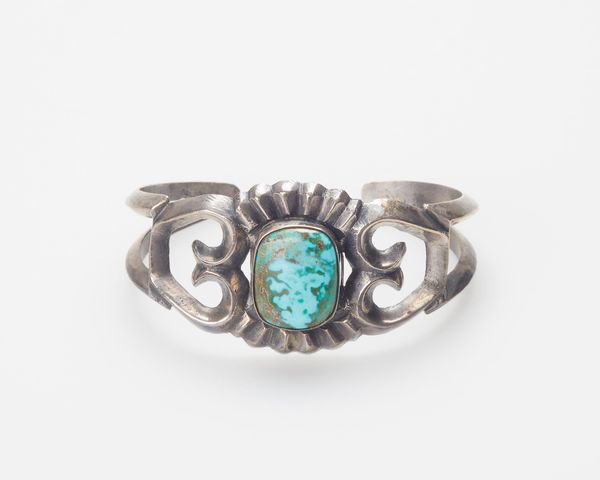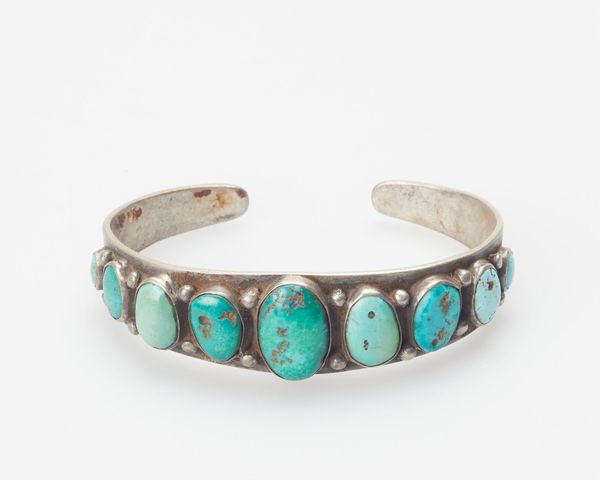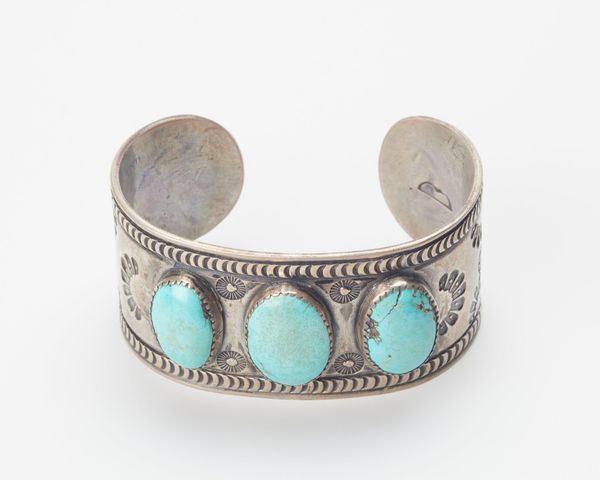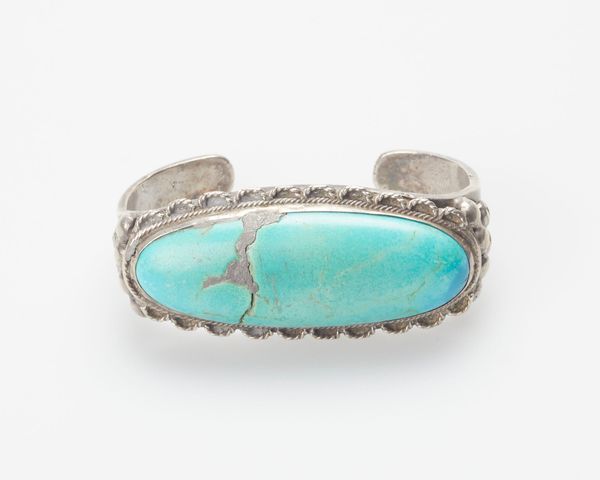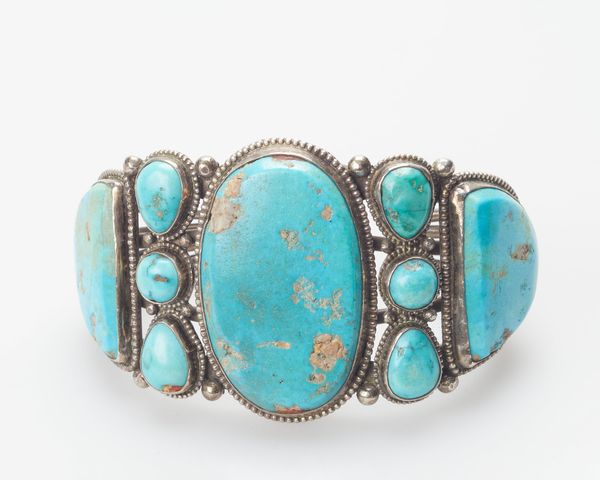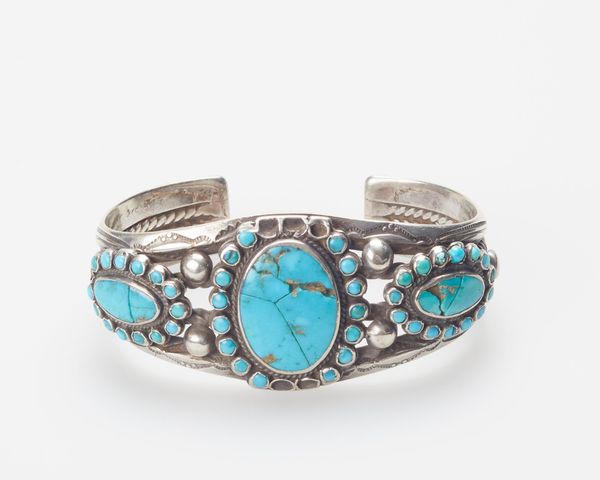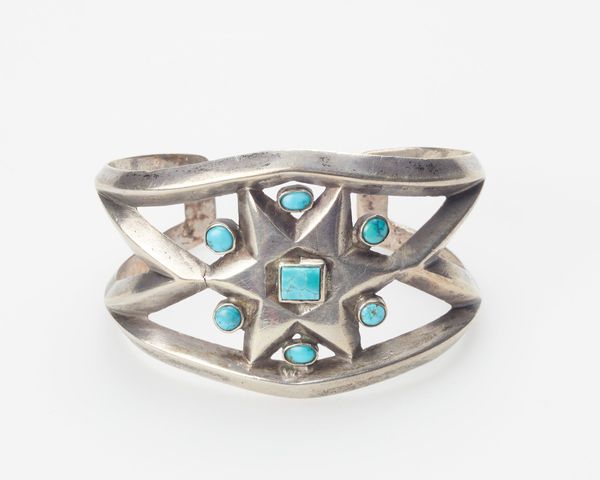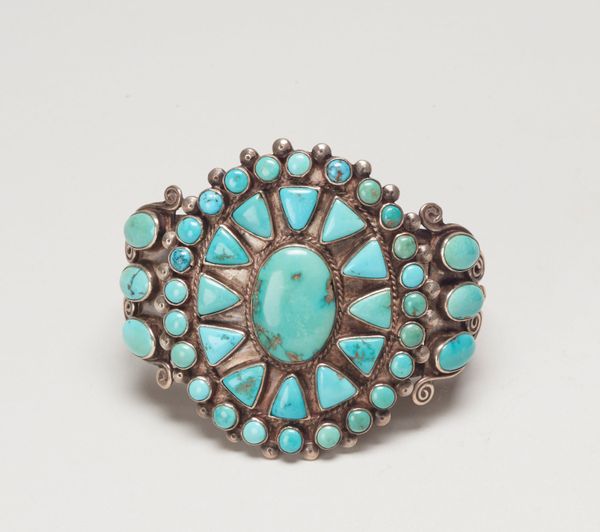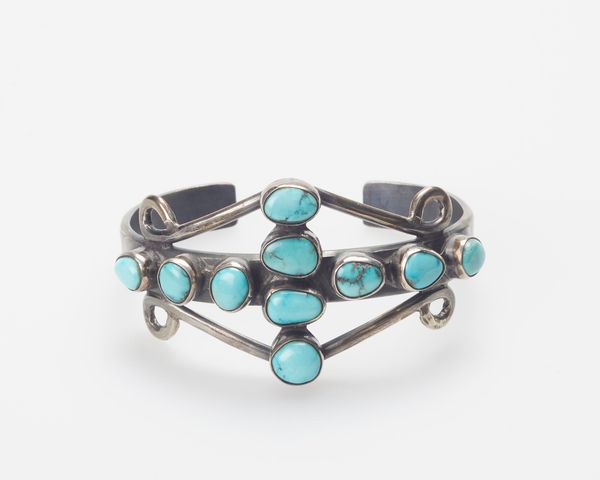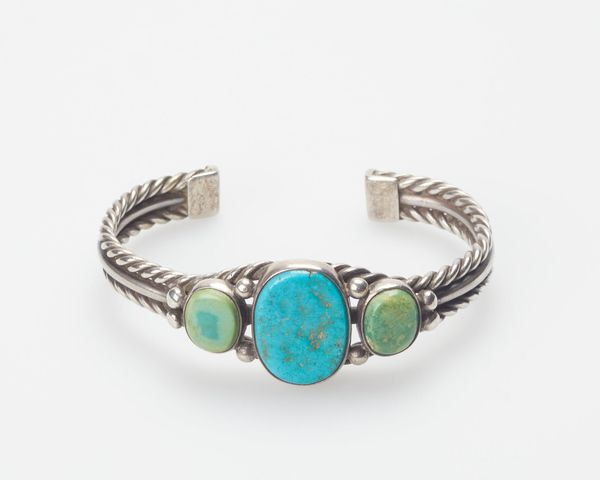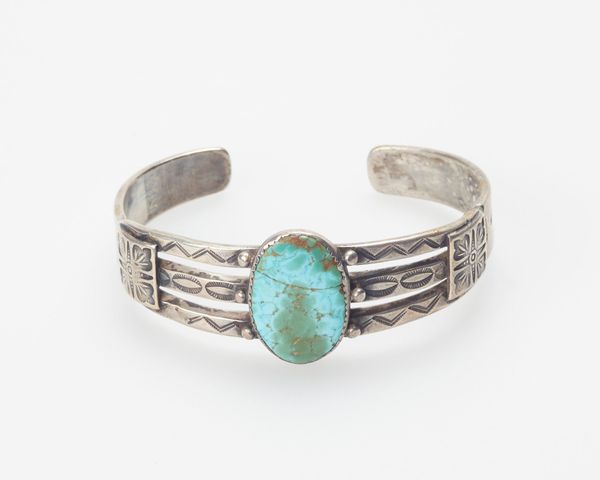
silver, metal
#
silver
#
metal
#
indigenous-americas
Dimensions: 2 5/8 x 1 3/8 in. (6.67 x 3.49 cm)
Copyright: Public Domain
Editor: Here we have a silver and turquoise bracelet by Navajo artists, made before 1920. I’m immediately drawn to the contrast between the cool silver and the bright blue stones. What story does this piece tell you? Curator: This bracelet speaks volumes about cultural exchange and adaptation. Before 1920, Navajo silversmithing was evolving, influenced both by Spanish colonial techniques and the tribe’s own distinct aesthetic and spiritual beliefs. These weren’t just decorative objects; they were symbols of identity, status, and often acted as currency. Think about the implications of adorning oneself with art amidst ongoing political and cultural pressures. What does it mean to claim identity through artistry? Editor: That's fascinating. So, the turquoise itself would have had significance? Curator: Absolutely. Turquoise is incredibly important in Navajo cosmology. It represents sky and water, crucial elements for survival in the Southwest. The silver, initially obtained through trade, became another medium for expressing Diné ingenuity and worldview. But let's also consider the economic realities: these bracelets were often made for trade with settlers and tourists, a complex negotiation of survival and cultural preservation. Do you see that tension reflected in the design itself? Editor: I do. There's a real push and pull – the traditional materials, formed into something that could be appreciated by different cultures. Curator: Exactly. The bracelet, therefore, becomes a powerful site of intersectionality. It invites us to consider gendered labor, the commodification of indigenous artistry, and the ongoing resistance inherent in cultural expression. We should also think about the collectors of these objects and what the bracelets represent in a museum context today. Editor: That really makes you think about layers of meaning. I didn't realize a piece of jewelry could hold so much. Curator: Precisely. Art like this offers opportunities to see art history not as isolated aesthetic achievement but as a dialogue within the complex fabric of our history and cultural identity.
Comments
No comments
Be the first to comment and join the conversation on the ultimate creative platform.
